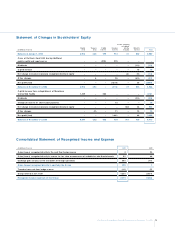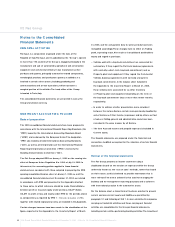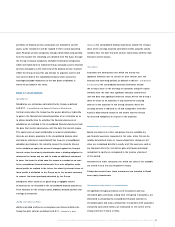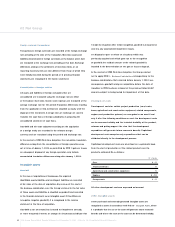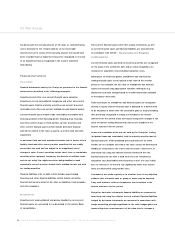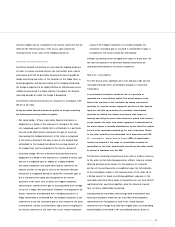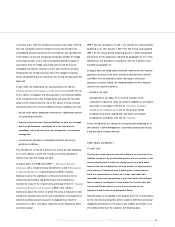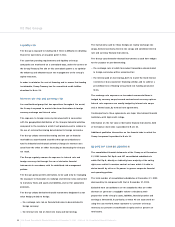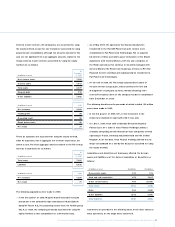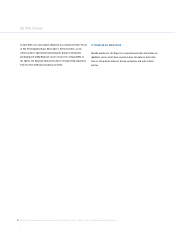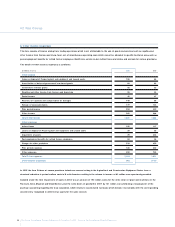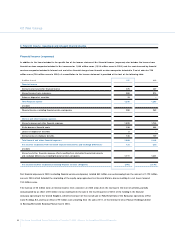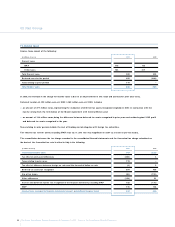Chrysler 2005 Annual Report Download - page 90
Download and view the complete annual report
Please find page 90 of the 2005 Chrysler annual report below. You can navigate through the pages in the report by either clicking on the pages listed below, or by using the keyword search tool below to find specific information within the annual report.
89
Fiat Group Consolidated Financial Statements at December 31, 2005 - N otes to the Consolidated Financial Statements
a currency other than the functional currency of the entity entering
into that transaction and the foreign currency risk will affect the
consolidated financial statements.The amendment also specifies that
if the hedge of a forecast intragroup transaction qualifies for hedge
accounting, any gain or loss that is recognised directly in equity in
accordance with the hedge accounting rules in IAS 39 must be
reclassified into income statement in the same period or periods
during which the foreign currency risk of the hedged transaction
affects consolidated income statement.The Group already adopt this
approach.
In June 2005, the IASB issued the final amendment to IAS 39 -
Financial Instruments: Recognition and M easurement to restrict the use
of the option to designate any financial asset or any financial liability
to be measured at fair value through profit and loss (the ‘fair value
option’).The revisions limit the use of the option to those financial
instruments that meet certain conditions.Those conditions are that:
the fair value option designation eliminates or significantly reduces
an accounting mismatch;
a group of financial assets, financial liabilities, or both are managed
and their performance is evaluated on a fair value basis in
accordance with a documented risk management or investment
strategy;and
an instrument contains an embedded derivative that meets
particular conditions.
This amendment to IAS 39 is effective for annual periods beginning
on or after January 1, 2006.The Group is currently assessing the
impact, if any, that this change will have.
In August 2005, the IASB issued IFRS 7 - Financial Instruments:
Disclosures and a complementary amendment to IAS 1-Presentation
of Financial Statements - Capital D isclosures. IFRS 7 requires
disclosures about the significance of financial instruments for an
entity’s financial position and performance.These disclosures
incorporate many of the requirements previously in IAS 32 - Financial
Instruments: Disclosure and Presentation. IFRS 7 also requires
information about the extent to which the entity is exposed to risks
arising from financial instruments, and a description of management’s
objectives, policies and processes for managing those risks.The
amendment to IAS 1 introduces requirements for disclosures about
an entity’s capital.
IFRS 7 and the amendment to IAS 1 are effective for annual periods
beginning on or after January 1, 2007.The Fiat Group early adopted
IFRS 7 for the annual period beginning January 1, 2005: comparative
information for the disclosures required by paragraphs 31-42 of this
Standard are not provided, in accordance with the transition rules
included in paragraph 44.
In August 2005, the IASB issued amended requirements for financial
guarantee contracts, in the form of limited amendments to IAS 39
and IFRS 4.The amendments require that issuers of financial
guarantee contracts include the resulting liabilities in their financial
statement, measured as follows:
initially at fair value;
subsequently at the higher of (i) the best estimate of the
expenditure required to settle the present obligation at the balance
sheet date in accordance with IAS 37 - Provisions, Contingent
Liabilities and Contingent Assets and (ii) the amount initially
recognised less, where appropriate, cumulative amortisation
recognised in accordance with IAS 18 - Revenue.
These amendments are effective for annual periods beginning on or
after January 1, 2006. Management is currently assessing the impact,
if any, that these changes will have.
RISK MAN AGEMEN T
Credit risk
The Group’s credit concentration risk is different, as a function of the
activities carried out by the individual sectors and as a function of the
various sales markets in which the Group operates;in both cases,
however, the risk is mitigated by the large number of counterparties
and customers. Considered from a global point of view, however,
there is a concentration of credit risk in trade receivables and
receivables from financing activities, in particular dealer financing and
finance leases in the European Union market for the Fiat Auto and
Commercial Vehicles Sectors, and in N orth America for the
Agricultural and Construction Equipment Sector.
Financial assets are recognised in the balance sheet net of write-downs
for the risk that counterparties will be unable to fulfil their contractual
obligations, determined on the basis of the available information as to
the creditworthiness of the customer and historical data.


